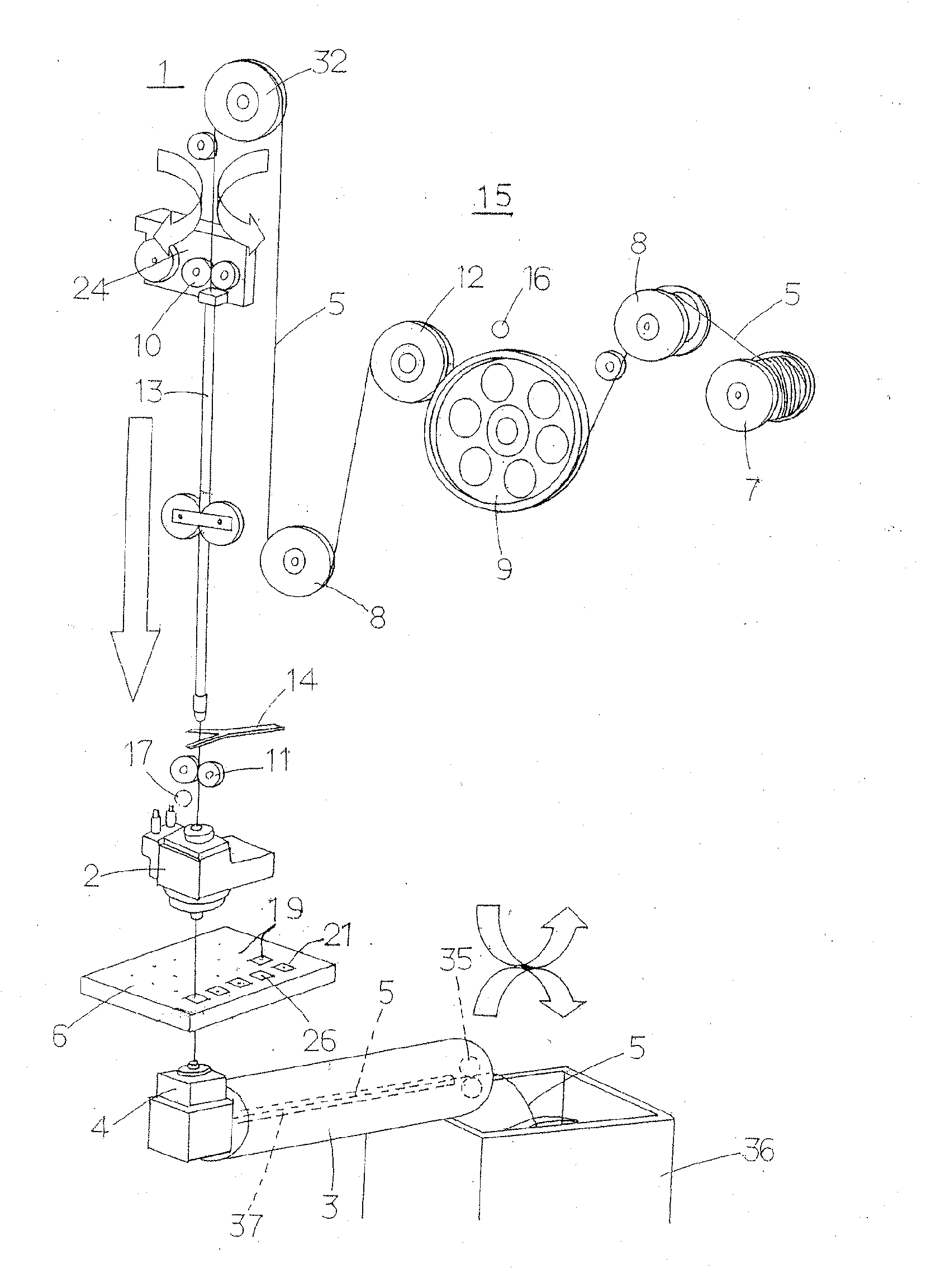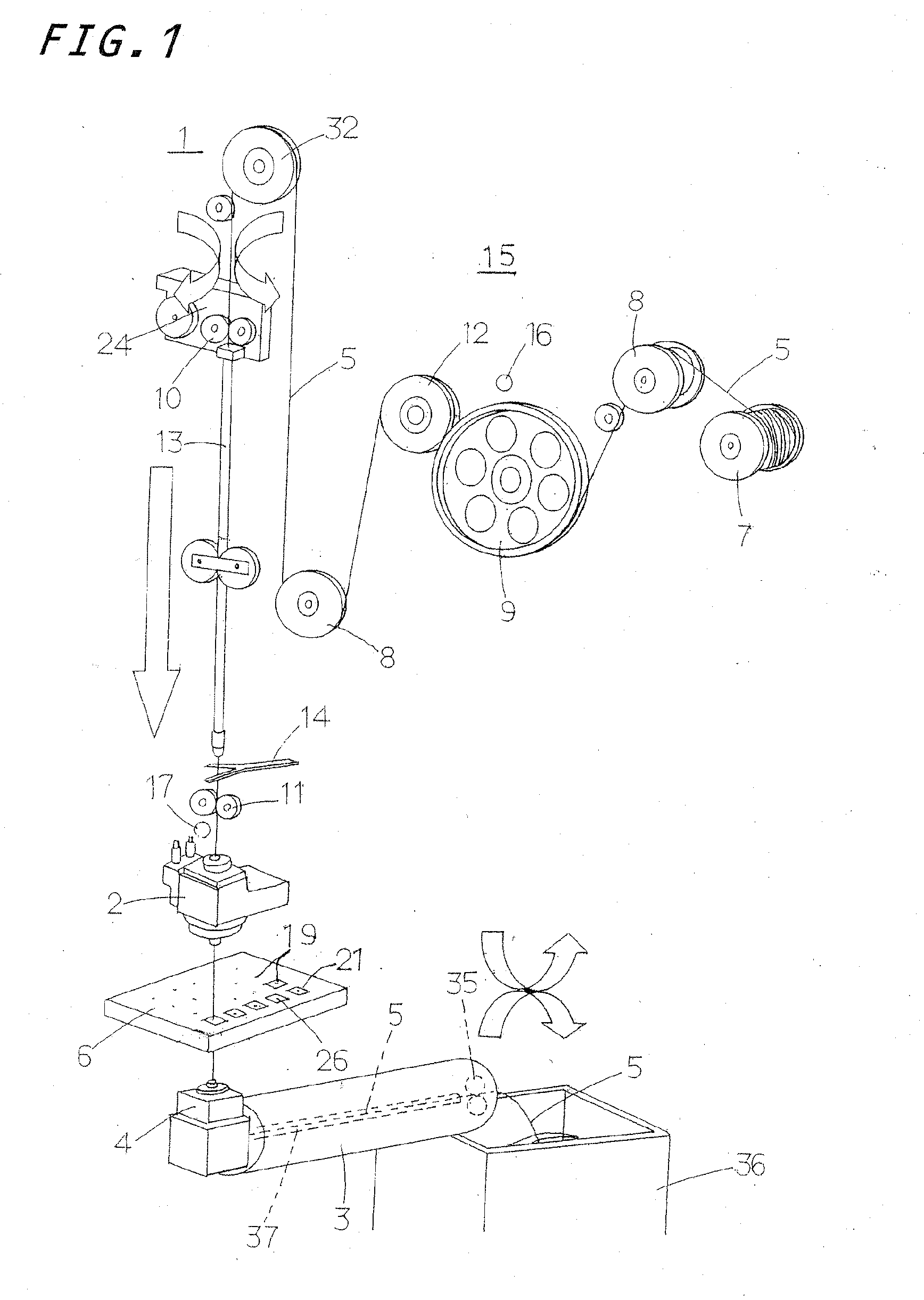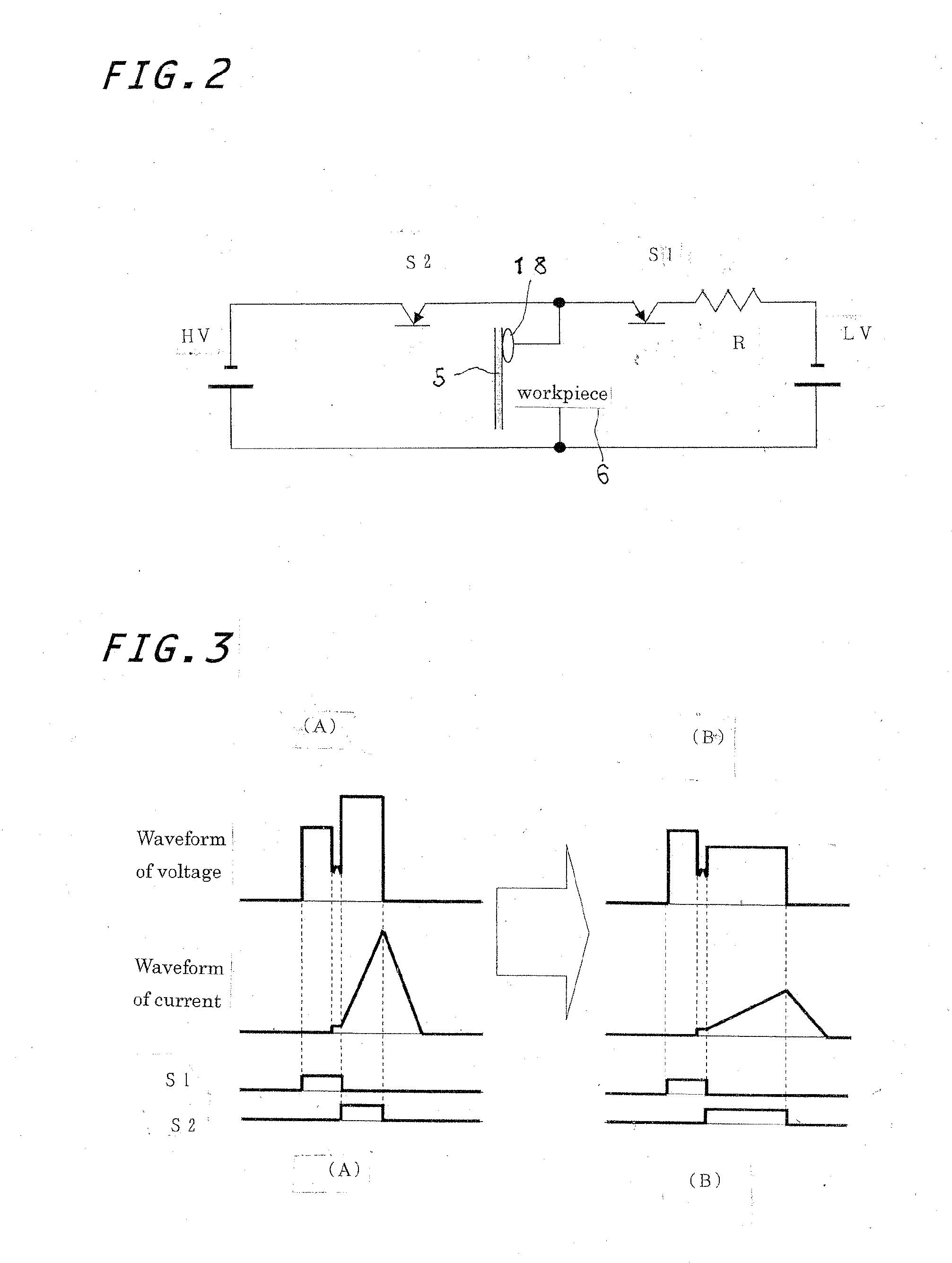Method of cutting out part with making partially welded spots in wire-cut electrical discharge machining
a technology of electrical discharge machining and wire cutting, which is applied in the direction of electrical-based machining electrodes, manufacturing tools, electric circuits, etc., can solve the problems of workpieces that cannot be attracted magnetically or workpieces, workpieces that cannot be processed on the surface, and adverse possibilities, so as to shorten the total machining time and improve machining efficiency. , the effect of easy breakag
- Summary
- Abstract
- Description
- Claims
- Application Information
AI Technical Summary
Benefits of technology
Problems solved by technology
Method used
Image
Examples
Embodiment Construction
[0027]A method of cutting out a part with making welded spots in wire electrical discharge machining according to the present invention is befitted to use in a wire electrical discharge processor to cut out a part with making the welded spots to keep the cut-out part against falling away apart from a workpiece by spark discharge energy occurring when the processing potential is applied across a wire electrode and the workpiece. A preferred embodiment of the wire electrical discharge processor to carry out the method of cutting the part with making welded spots in wire electrical discharge machining according to the present invention will be hereinafter described in detail with reference to FIG. 1. The wire-cut electrical discharge processor is generally composed of a source bobbin 7 mounted on a machine frame 15 and having wire electrode coils 5 wound around the bobbin 7, change-of-direction rollers 8 to control threading directions of the wire electrode 5 unwound out of the bobbin ...
PUM
| Property | Measurement | Unit |
|---|---|---|
| length | aaaaa | aaaaa |
| voltage | aaaaa | aaaaa |
| voltage | aaaaa | aaaaa |
Abstract
Description
Claims
Application Information
 Login to View More
Login to View More - R&D
- Intellectual Property
- Life Sciences
- Materials
- Tech Scout
- Unparalleled Data Quality
- Higher Quality Content
- 60% Fewer Hallucinations
Browse by: Latest US Patents, China's latest patents, Technical Efficacy Thesaurus, Application Domain, Technology Topic, Popular Technical Reports.
© 2025 PatSnap. All rights reserved.Legal|Privacy policy|Modern Slavery Act Transparency Statement|Sitemap|About US| Contact US: help@patsnap.com



